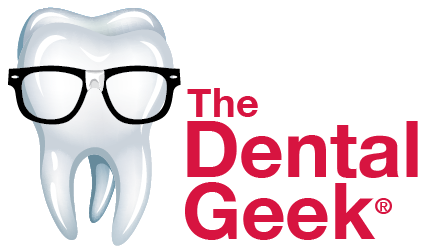5 Financial Tips for Dental Practice Owners
One of the main sources of financial troubles for dentists is poor management of cash flow, and fixing that can go a long way towards improving your practice’s finances. But if you don’t know what to look for, how can you know what to fix? We have a few suggestions.
Check your practice’s foundation
Choosing the right corporate structure and income schedule for yourself and your practice is critical, and can solve a lot of problems at once. Operating as an S-corporation is most ideal, because it allows a dentist to take some income in a W-2, with taxes withheld every paycheck. But an accountant might recommend a sole proprietorship to minimize tax responsibilities. This can slow your retirement savings – you can’t match as frequently on income from distributions, which is where you’ll get all of your income in a sole proprietorship. You can lose a lot of money this way in the long run.
Don’t fear debt
Dentists are naturally debt-averse, which isn’t really a good thing. They’re likely to cut a check for a large purchase rather than financing, and if you’re doing that with a piece of equipment that costs over $30,000, it could completely deplete your checking account. That’s as good as slapping handcuffs on yourself.
Make sure you have a baseline level of cash on hand in your accounts at all times to deal with surprise expenses, based on the needs of your specific practice. Forcing yourself to leave that money alone can seem stressful, but it’s a lot better than having a tax bill that can’t be paid, or delaying your pay because your bank accounts have run too low.
Don’t leave taxes to the last minute
The way you pay your taxes is intertwined with how your business is structured. Taxes automatically get pulled from your W-2 earnings in every paycheck, but not from distributions. Sole proprietorships and S-corporations both need to make extra tax payments to cover that extra income. But if 100 percent of your income is coming from distributions, as it does in a sole proprietorship, then obviously 100 percent of your taxes need to be paid this way. Those bills can get pretty big and have a lot of variability.
Since an S-corporation allows you to be paid in W-2 income as well, only a fraction of your income tax is your responsibility via quarterly tax payments. Filing two tax returns may seem more complicated, but it ensures cash flow stability, a healthier financial state and a less stressful life in general.
Quarterly tax payments fluctuate as your practice does. If you’re growing and that isn’t taken into account, you may not pay enough in taxes on your distribution income. That can lead to a year-end tax bill of up to $100,000. Taking a smaller percentage of your income in distributions – like in an S-corporation – can help limit the damage.
Stop the overhead bleeding
An established dentist, one who’s been in charge of a practice for 8-10 years, should be running at around 55-60 percent overhead. But for a lot of practices, the number’s much closer to 90 percent. If your overhead is more than 60 percent, something is horribly wrong with the way your practice is being run, and you have to fix it to have any hope of good financial health.
In a million-dollar practice, for every one percent drop in your overhead, that’s around $10,000 in cost savings. That’s money that can be invested, both back into the practice and into your retirement. Paying less improves your cash flow and puts more of your money where it should be – working for you.
Make each decision count
Think about the decisions you make in your practice. How many involve spending $30,000? Probably not many, around one or two a year. How many involve spending $5,000? That’s more like one or two a month. When you’re making these decisions, each one doesn’t seem big, but they add up fast, especially if you make the wrong choice.
When it comes to things like smaller equipment purchases, raises to employees or fee increases, it helps to have someone on the outside to advise you. At Four Quadrants we have a “$5,000 Rule” for our clients – if something’s going to cost you $5,000 or more, whether in your practice or in your personal life, ask us about it. By talking through the best options for your specific situation, you may find it’s the wrong time, simply something you don’t need at all or that it could be a necessity that needs to be structured best for your situation without substantially hurting cash flow. And while you’ll get some of them right, a lot of those choices end up to be mistakes – exactly the kind that snowball and end up really hurting you.
Getting a knowledgeable and committed financial advisor to help you make decisions can be the difference between financial despair and early retirement. Don’t try to go it alone. For more tips download FourQuadrant’s free success kit: http://info.fourquadrantsadvisory.com/success-kit

Leave a Reply